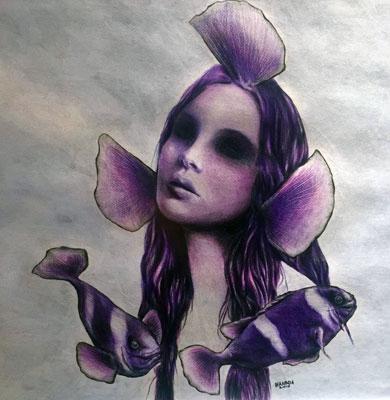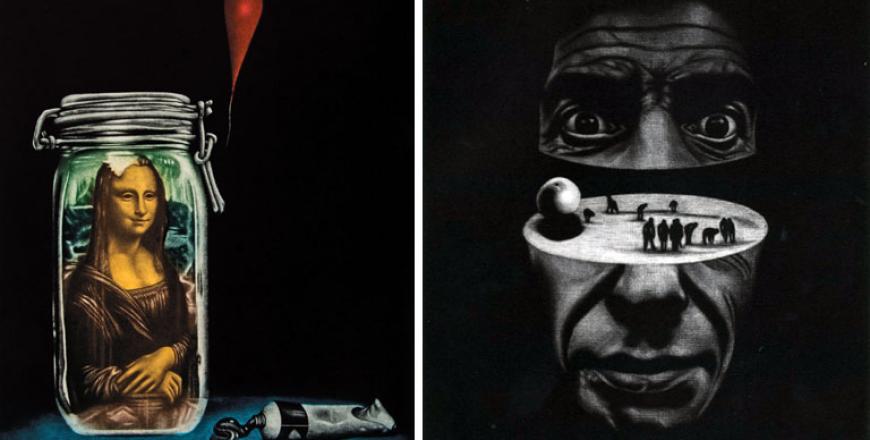You are here
Lines — purity of thought
By Rand Dalgamouni - Apr 28,2015 - Last updated at Apr 28,2015

AMMAN — For Spanish artist Albert Coma Bau, a pencil can be an extension of his body and soul.
Using this rudimentary instrument, he bases his art on the most basic form of drawing — lines.
His drawings become visual representations of the movements he makes to create each piece after fully clearing his mind and reaching a trance-like state.
The artist, whose latest exhibition at Foresight32 Art Gallery showcases his distinctive style, said he does not like to do a lot of thinking when producing each art piece, giving way to instinct and spontaneity.
After doing “very colourful work with lots of material” at the early stages of his career, he realised that going to the most basic form of lines in black and white is the best way to express himself through art, abandoning unnecessary embellishments.
“In one line I can say everything, so why do I have to add thousands of colours?”
Using that simple line — “the most powerful sign” — the artist attempts to trace connections between human beings.
“With lines I wanted to connect everyone,” he told The Jordan Times.
His work in the exhibition “Life as a piece of art” employs lines to depict outlines of intertwining bodies and heads, stripping people of all the layers that society imposes on them and showing them in their purest form.
The nudity in his work, he said, is a reflection of that unadulterated purity of humans before social norms and restrictions are forced upon them and before they are influenced by education and religion.
They are pure and open to the world.
While not all these layers brought on by society are necessarily bad, the artist says it is better to question them and “take what’s good for you”.
He believes in dealing with life as a piece of art and shaping it in the way that best fits each individual.
“It’s time to have the responsibility to draw who we really are on a piece of white paper,” he wrote. By acknowledging “our fragility”, he added, “we become stronger”.
The lines in each piece are not rigid. There is fluidity to the artist’s work that shows his subjects in constant movement.
In some drawings, he adds a striking red colour to the basic black an white lines, giving an additional dimension to the bodies depicted in his work.
Red, for the artist, is an expression of love and passion.
In some artworks, the bodies are not simple silhouettes. They are made up of webs of interconnected lines in an attempt to examine “what we are made of”.
Humans are a “net of feelings, emotions and energy”, the artist said.
Some pieces depict two melding heads, joined by the web of thoughts and energy, while other works feature black heads, with an intensity of darkness within them.
The artist said the black faces are not common in his work, but he sees the darkness as possibly an expression of “things we don’t want to let go of” that are hard to accept and control.
To maintain his line-based style in larger artworks, he used a bamboo stick as his “pencil”, producing large-scale interpretations of movement and gestures, which are thought-provoking despite their seemingly simple concept.
Through lines and basic shapes, the art pieces offer a fresh interpretation of more complex, deep subjects, such as identity and connections between people.
But the artist said he does not seek to impose a certain interpretation of his work.
“I practise art to understand myself first, then others and the world.”
The exhibition concludes on April 30.
Related Articles
AMMAN — “Being a good human being is more important than being a world-recognised artist,” said Pakistani artist Jimmy Engineer, who devoted
AMMAN — Believing in the “special link” between nature, emotions and feminine beauty, Jordanian artist Hanada Khataybeh is showcasing that r
Surrealist, symbolic, in warming colours and intriguing dark-light contrast, Hachmi Azza’s “Retrospective Exhibition of Mezzotint Works”, at



















